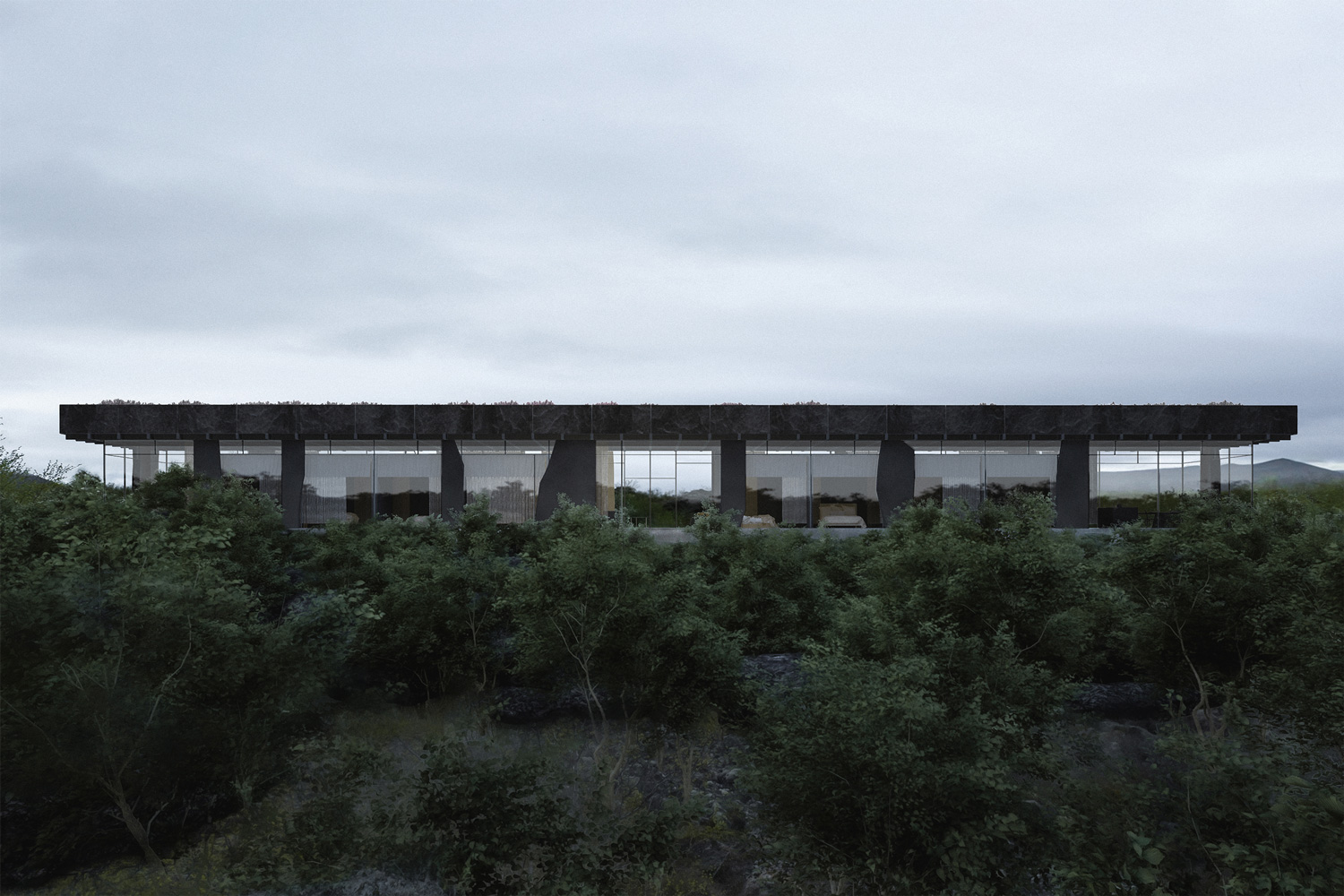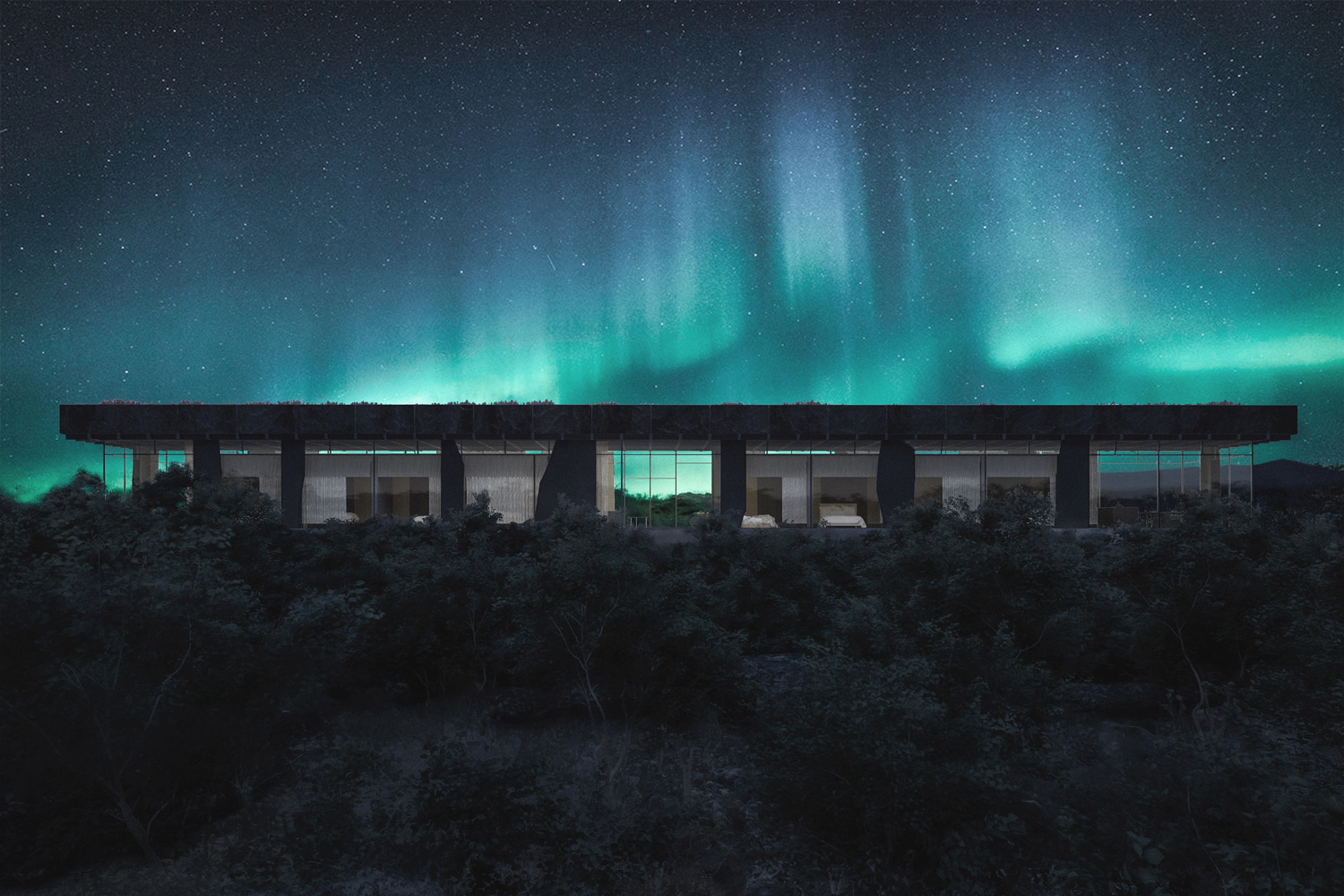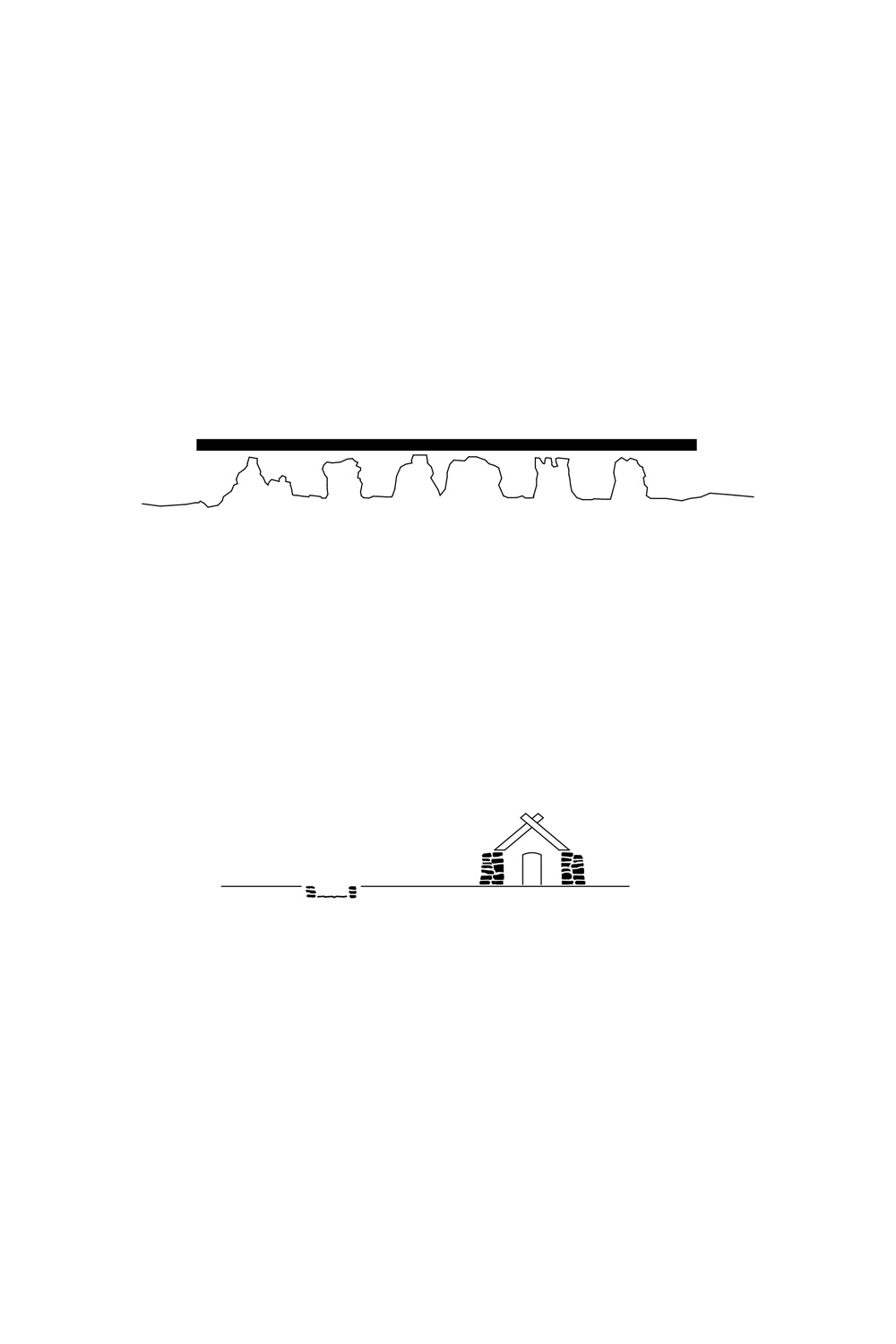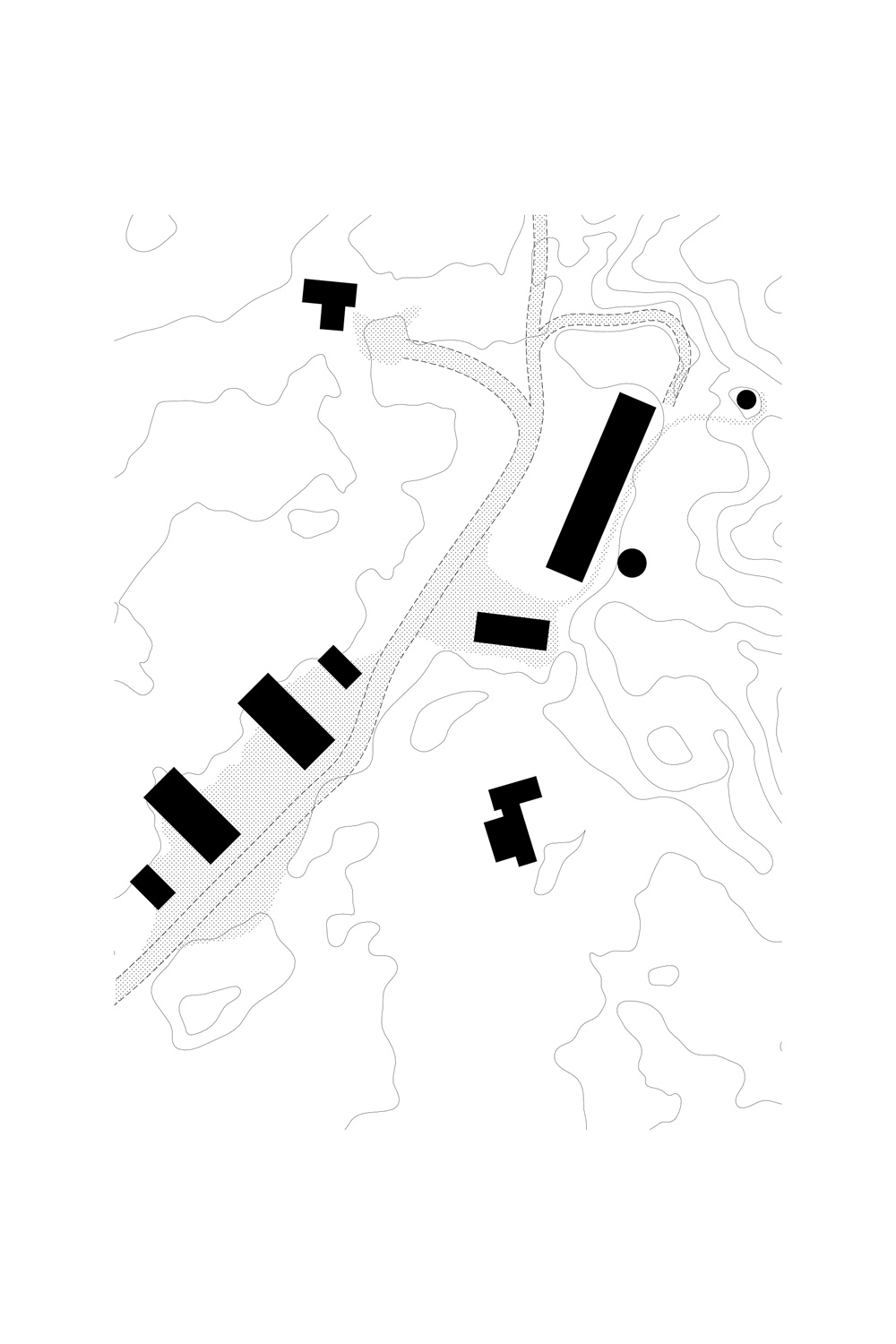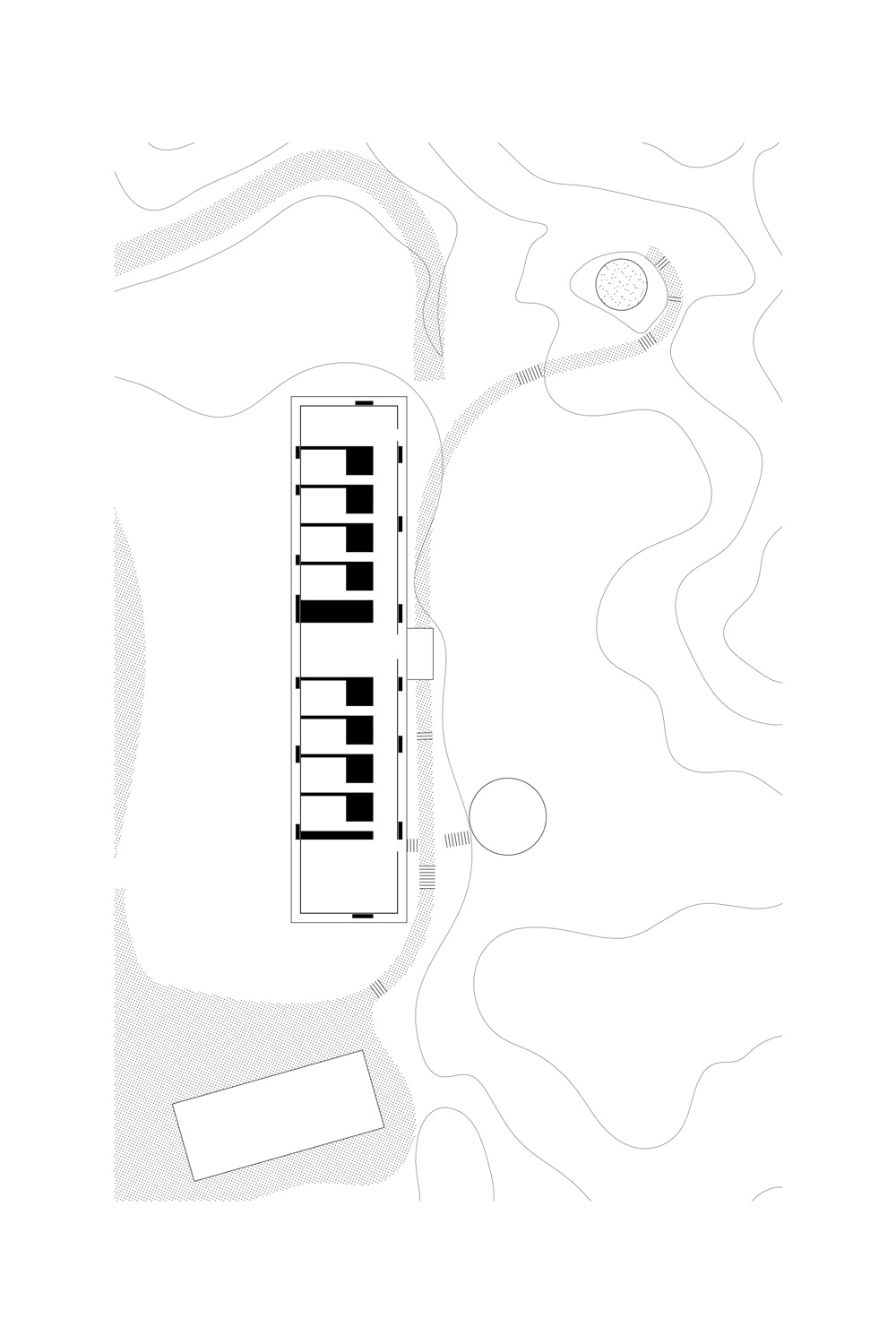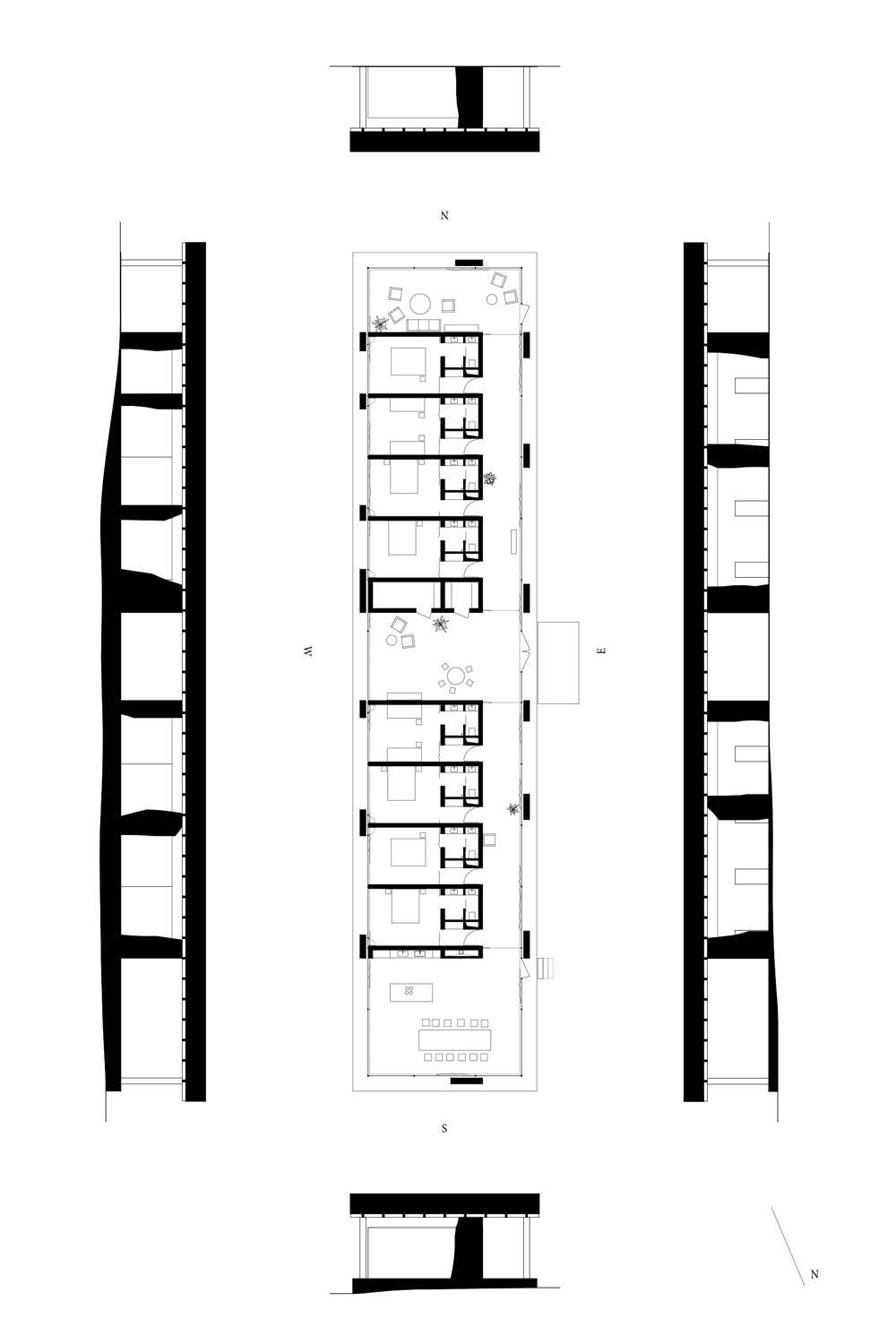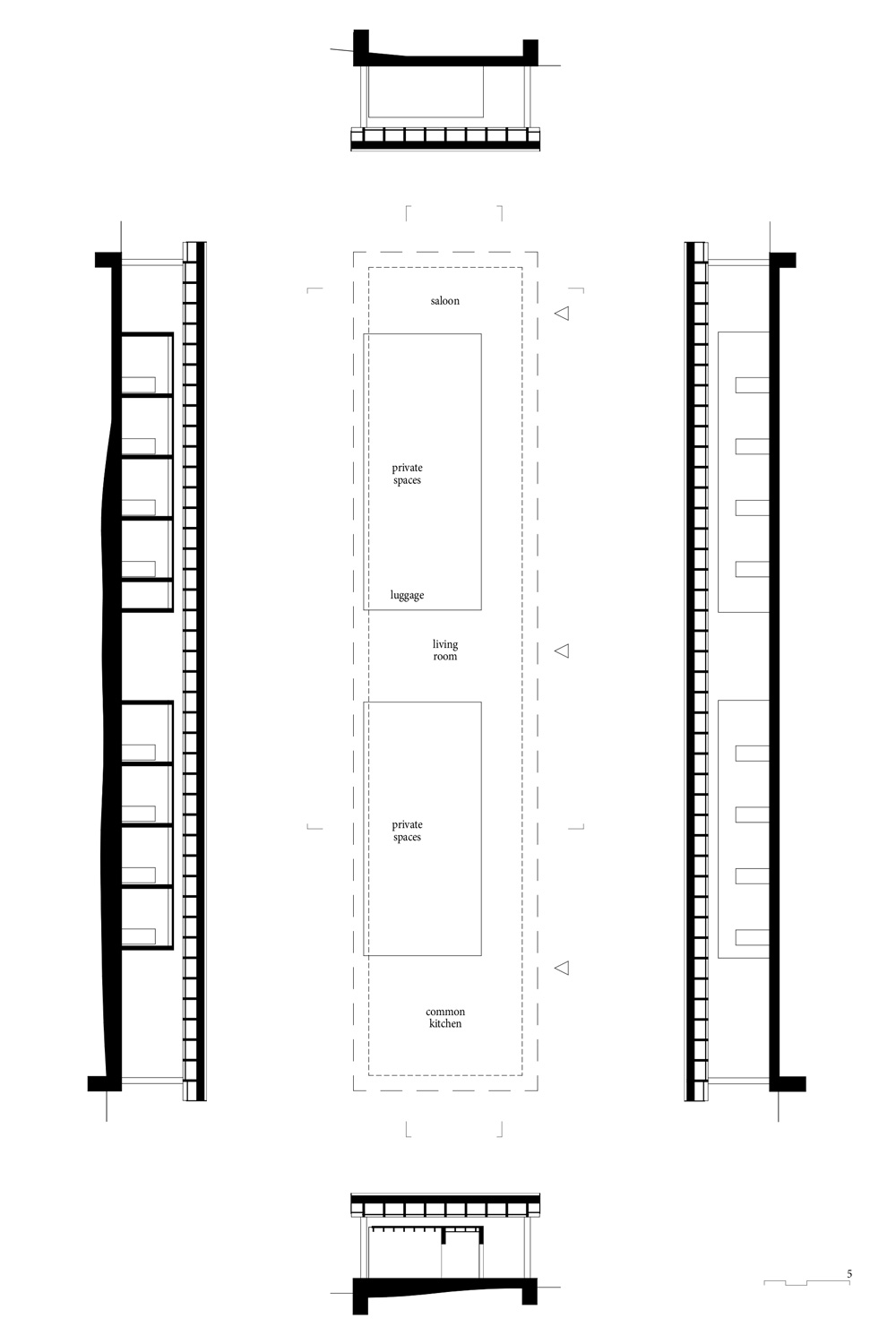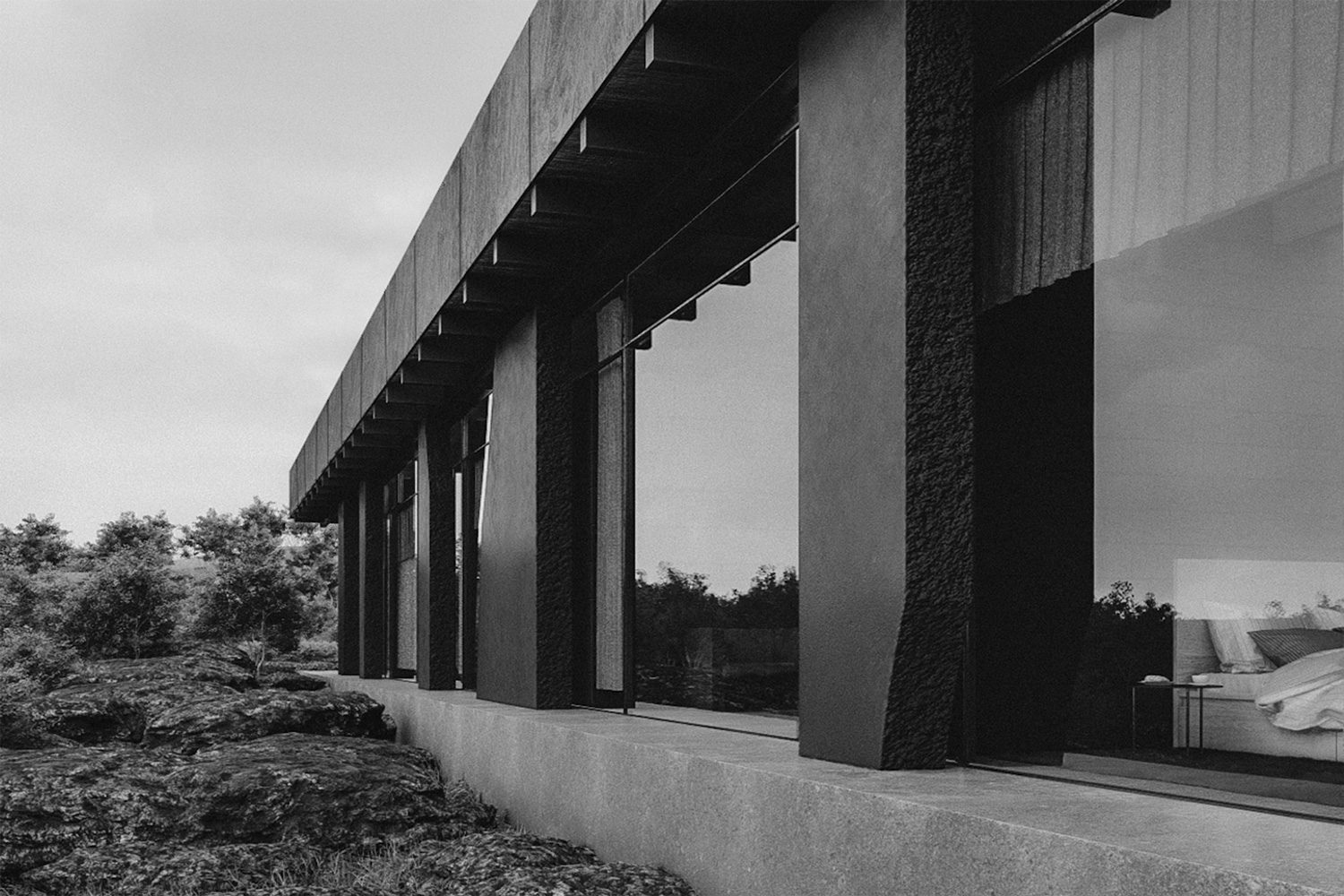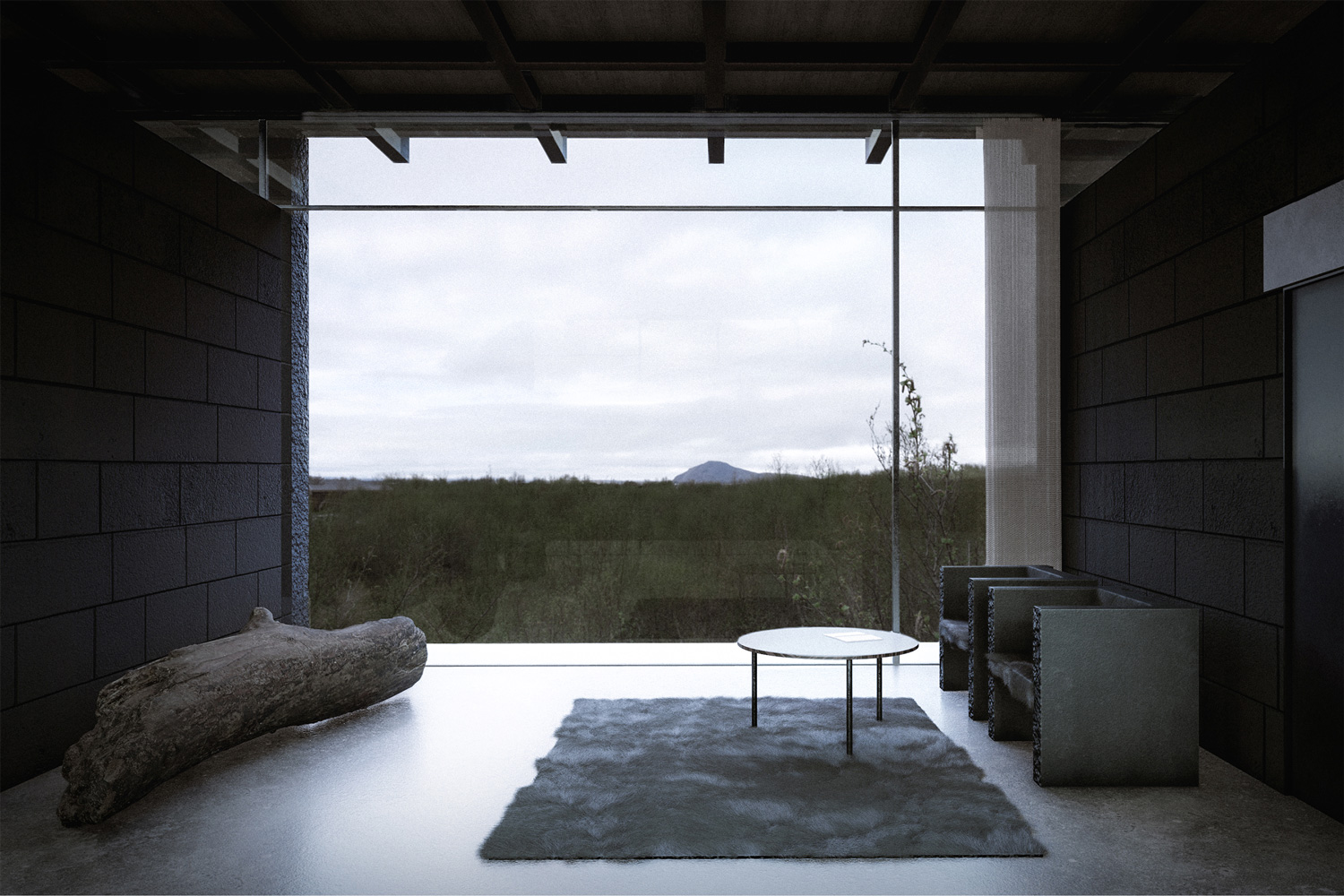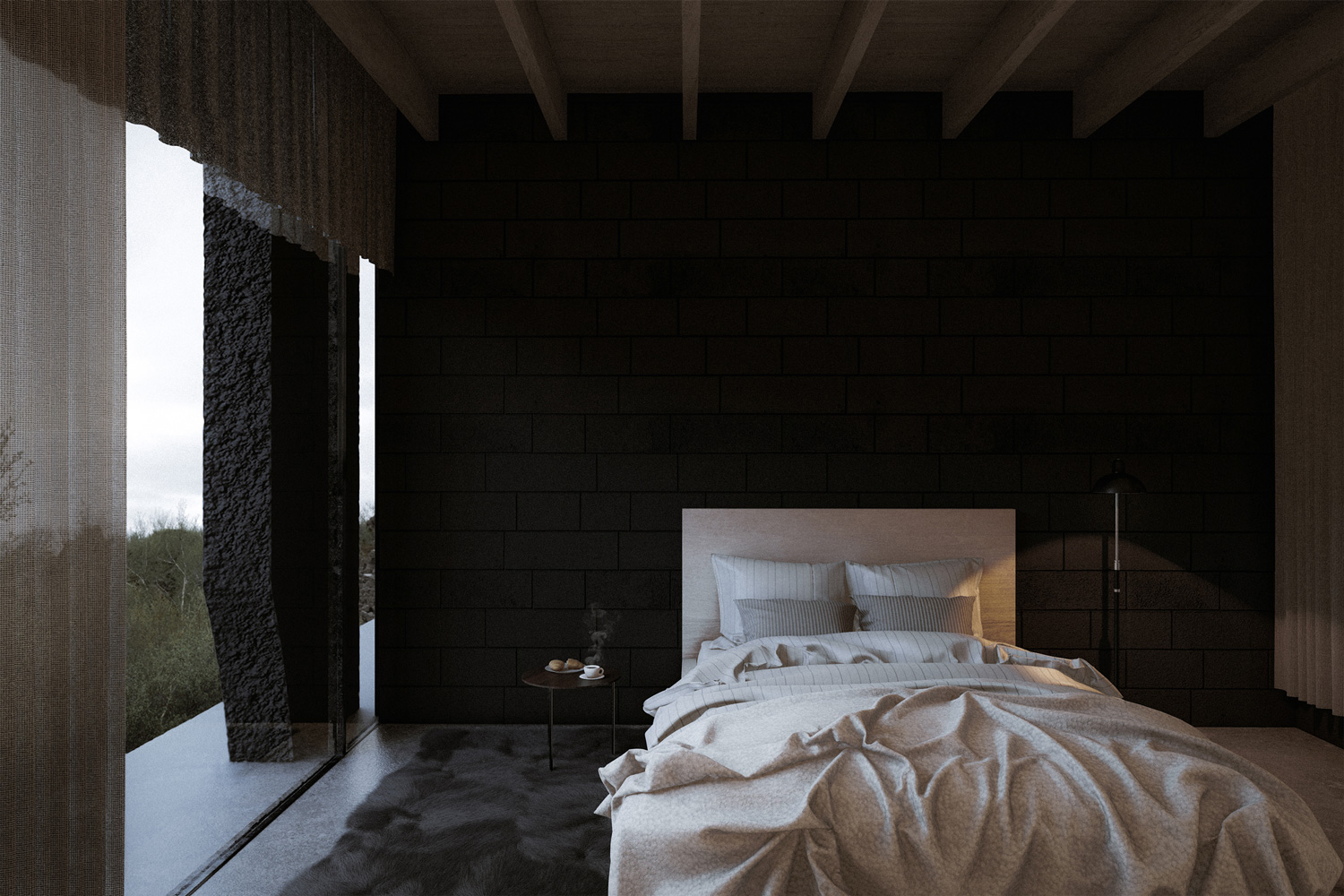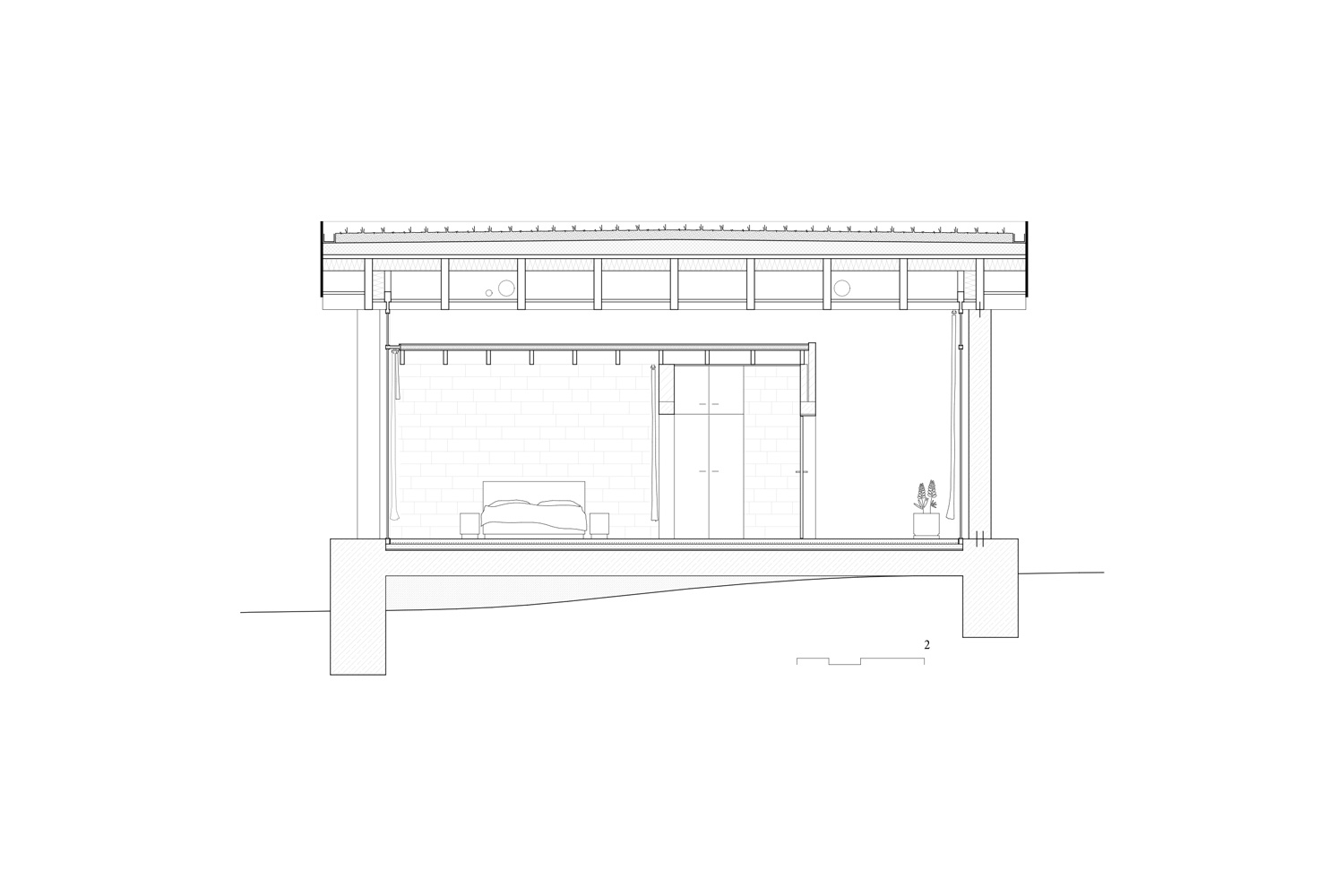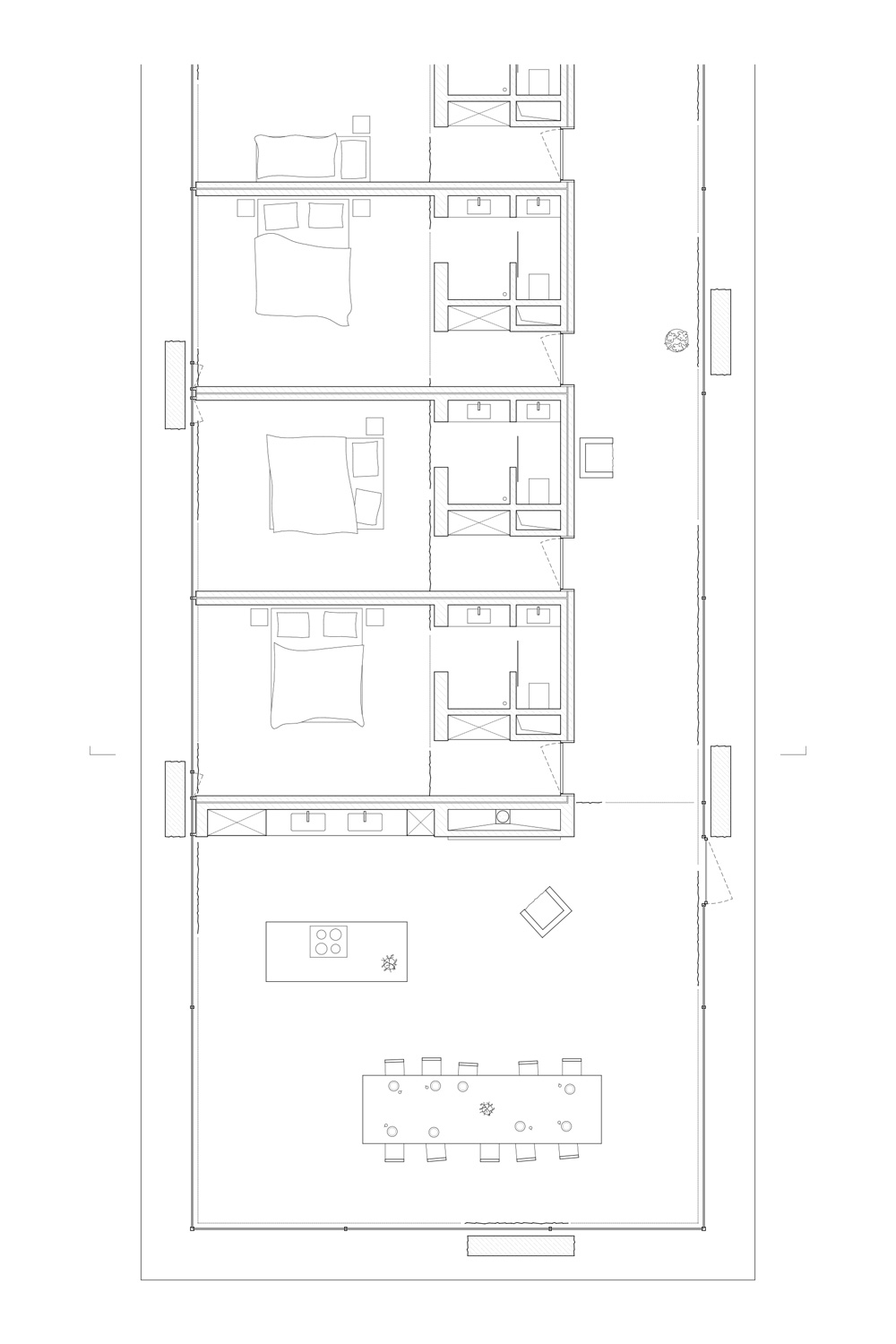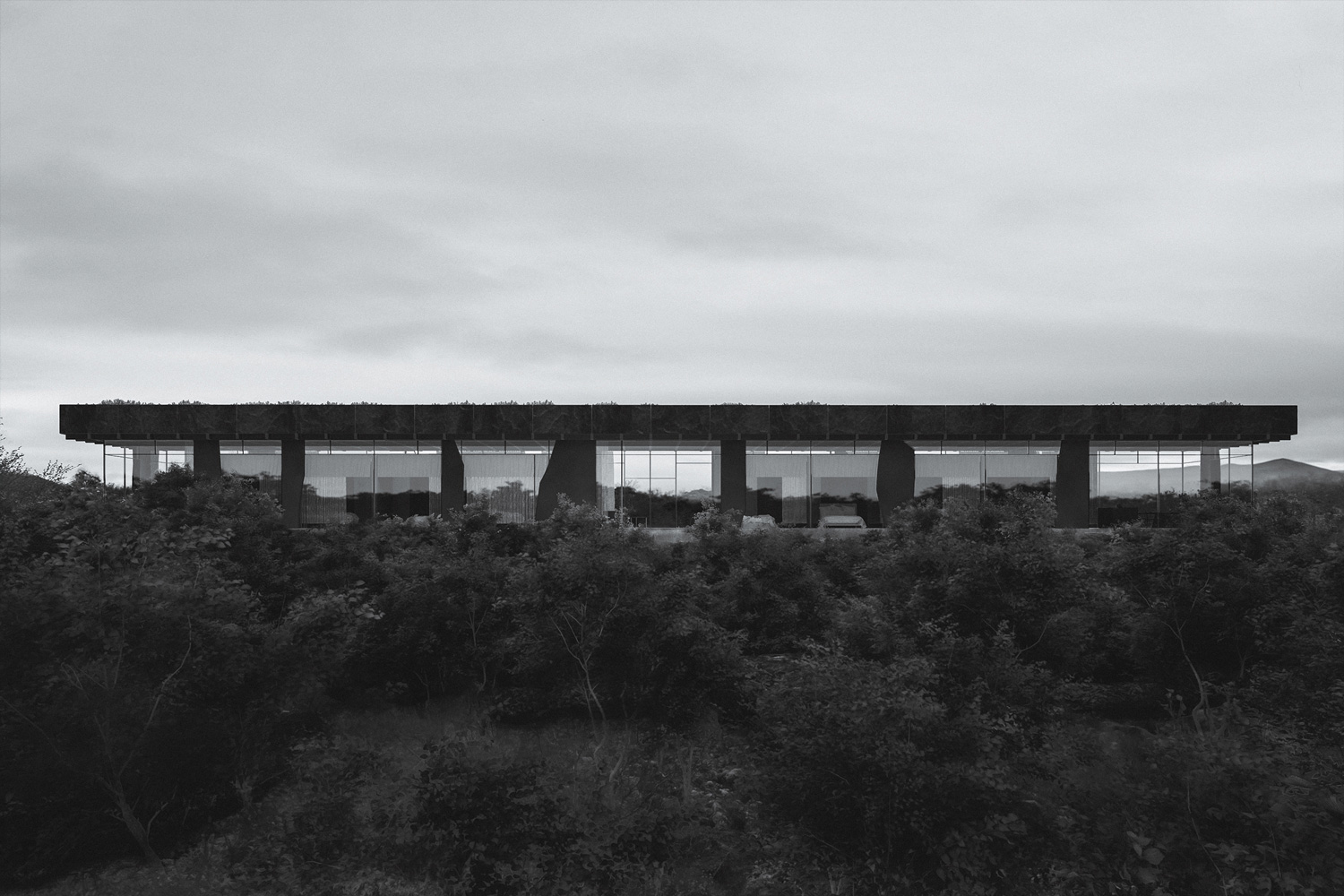☉ Iceland Thermal Springs Guest House is an honour mention competition entry by Matthias Pabst and Martin Meier for Beebreeders in 2019. It is located in Lake Mývatn Iceland in a forest setting. Its scale is small with a surface of 500 sqm. Key materials are stone and wood. Review the 2 proposals for the same competition.
“Learning from Iceland” a shelter as a reminiscence of the perceived context and atmosphere.
The aim of our design is to create a place of peace, security and cosiness that blends into nature and allows the formative landscape of Iceland to flow unhindered. The building stands on its own with its self-confident elements and at the same time blends easily into its surroundings thanks to the unusual opening to the outside.
This creates an architecturally strong space that draws its atmospheric strength from the contrast between openness and unity. Only through this interaction a feeling of freedom and unconstrained privacy arise.
Embedded in the impressive, barren landscape, an architecture is thus formed that fits seamlessly into the existing context, does not compete with it, and through its aesthetics has the potential to awaken people’s identification and thus become an iconic landmark itself.
Metaphorically, the roof floats over the lava stone of the landscape. A symbol of security that frames and accentuates the lightness and flowing space below. Under the protection of the roof, everything can happen freely – both typologically and constructively.
From the abstraction of the typological elements of Iceland’s vernacular architecture, an architecture results that includes and redefines them. This creates a space spanned by massive stone walls, a self-supporting greened wooden roof that provides protection from the weather and individual permeable wall panels that create the necessary thermal envelope.
The deliberate positioning on the property and the slightly sloping pedestal create an additional privacy for the guests, while maintaining spatial proximity to the existing buildings of the original resort.
The perspective over the lava rocks and birches makes it a perfect place to observe Aurora Borealis and visit nearby attractions such as Lake Myvatn, Hverfjall Volcano or Dimmuborgir lava fields.
Typologically, the interior space articulates itself as a spatial continuum in which there is no clearly defined border to the outside. The two volumes of the private spaces define and zonate the common areas, which merge seamlessly into one another. The distance between the rooms and the ceiling underlines this additionally in the vertical dimension. The overhanging roof frames the view and perception of the impressive nature.
Facing south is the communal kitchen with a large table and fireplace. To the west is the communal living room and to the north the saloon, which invites you to an evening glass of wine. All areas are connected by the east-facing corridor, which can also serve as a freely usable area and is ideal for spontaneous lingering.
The individual rooms are each accessed by a separate entrance, which as a typological threshold space makes the clear separation of common areas and private rooms spatially perceptible. This change, in the intimate area of the guests, is reinforced by the subdued light of the passage and the large framed view to the outside.
Since the private rooms serve as a reduced retreat, only the bed is located here, which can be flexibly oriented in the room. Despite of the compact space, a luxurious and generous feeling is created, which is supported by the fact that the adjacent sanitary area with shower is seamlessly connected to it and only the toilet is separated by its own door.
By superimposing curtains, each guest can define his or her own individual degree of privacy, despite the maximum structural opening of the rooms to the outside. All rooms take full advantage of Iceland’s remarkable scenery.
The traditional hot tube, based on vernacular architecture, is located a bit outside the house on a hill, also to strengthen the use as an act of community.
The material concept withdraws itself in favour of magnificent nature and draws its raw yet luxurious aesthetics from its spatial and atmospheric strength. A self-confident yet filigree impression, created by building materials that authentically stand for what they constructively contribute to the overall work.
The constructive system is basically defined by the elements of the base, the pillars, the roof and the interior volume of the rooms.
The base, which adapts to the course of the terrain, is to be made of in-situ concrete. The pillars can be prefabricated in their shape and in their design, which is stuck with the chisel.
The interior walls, on the other hand, are made of local lava stone on which separate wooden ceilings lie. They are therefore not statically relevant to the system. An insulation layer in the construction of the walls and ceiling guarantees a decoupling of the room sound across the individual rooms.
This creates a creative contrast between concrete pillars that abstract the natural forms of the landscape and the natural lava stone, which has been transformed into a manmade form. A facade made of low iron oxide white glass is used as the thermal shell. This is combined with curtains made of regional wool, which support the cosy atmosphere.
The wooden roof is constructed as a self-stiffened flat supporting structure, so that only a few supports on the concrete pillars are sufficient. As weather protection and reminiscence of the vernacular architecture, a gravel layer with light greening is used, framed by cast iron plates as an attic. The construction of the building therefore consists just of a few different materials, most of which can be obtained locally. Thus, a relatively economical and sustainable construction method is possible at this special place.
The building is heated by underfloor heating with geothermal energy, which also provides the hot water for the outside tube. The concrete base also serves as a thermal storage mass. In combination with the curtains, the overhanging roof provides sufficient shade and at the same time allows the low sun to warm the building.
Ventilation elements in the suspended ceiling ensure a balanced room climate. Furthermore, all rooms and the necessary entrances are completely barrier-free. In order to meet additional space requirements, it is possible to extend the length of the building to up to ten rooms. In addition, further technical or storage areas, as well as a wine cellar or an extended wellness area could be accommodated in a basement.
